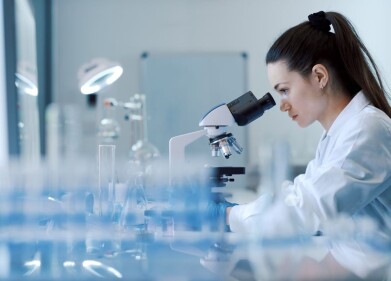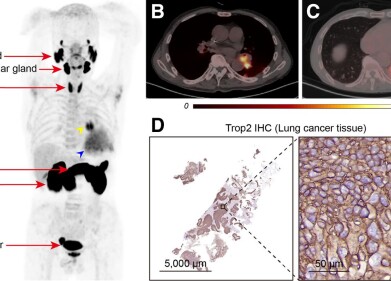-
.jpg) Dave Hall Science Group Leader Macromolecular Crystallography Group (Credit Diamond LIght Source)
Dave Hall Science Group Leader Macromolecular Crystallography Group (Credit Diamond LIght Source) -
 Professor Dave Stuart (Credit: University of Oxford)
Professor Dave Stuart (Credit: University of Oxford)
News & views
Diamond Protein Data Bank Continues to Expand
Jan 16 2021
In late October 2020, Diamond and its scientific users achieved a significant milestone by depositing its 10,000th Macromolecular Crystallography (MX) structure in the Protein Data Bank (PDB), a global repository and resource for students and researchers working to understand the molecules of life, highlighting its position as one of the most successful and prolific light sources solving biological structures and sharing this information worldwide. In little over a month this total had already jumped up to 10,336 structures.
As the UK’s national synchrotron, Diamond Light Source has a suite of instruments dedicated to solving the 3D structure of large biological molecules – proteins, DNA and RNA. Scientists use the MX beamlines to reveal the shape and arrangement of biological molecules at atomic resolution, knowledge of which provides a highly accurate insight into function. Each 3D structure solved is deposited into the Protein Data Bank (PDB). The depositions are then released on a weekly basis. October’s PDB release took Diamond beyond 10,000 structures deposited with over half of these based on human proteins. From March to early December 2020 over 193 Covid-19 related structures from data collected at Diamond through the pandemic were made publicly available in the PDB including many using the X-Chem fragment screening facility.
Dr Dave Hall, MX Science Group Leader at Diamond, said: “This is an incredible milestone for Diamond. Thanks to the continually developing capabilities and dedicated staff, we have been able to consistently serve the UK, European and international structural biology community with access to cutting-edge technology and expertise in the field.”
Professor Dave Stuart, Director of Life Sciences at Diamond Light Source and Joint Head of Structural Biology at University of Oxford, commented on the batch of Diamond MX structures which included the 10,000th: “This is a fantastic demonstration of the breadth and diversity of the science and user base of Diamond’s MX beamlines. Institutes from the UK, Europe, the Middle East, USA and Australia have been involved in these experiments, from both academia and industry. These latest structures will help to progress scientific research in a range of areas, from the discovery of chemotherapeutics for the treatment of metabolic diseases1 to identifying viral mutants that may become highly contagious and cross the species boundary2. Knowing the structure of the biological molecules involved gives us vital information on how they function, which helps us to understand the role they play in health and disease.”
Diamond is one of around 50 synchrotron light source facilities currently in operation worldwide and plays a key role in solving biological structures. In 2019, 35% of all structures solved at synchrotrons in Europe were solved at Diamond along with around 11% of all worldwide synchrotron structures.
Further information online
(1) (Mpro, Douangamath et al, 2020)
Digital Edition
Lab Asia 31.6 Dec 2024
December 2024
Chromatography Articles - Sustainable chromatography: Embracing software for greener methods Mass Spectrometry & Spectroscopy Articles - Solving industry challenges for phosphorus containi...
View all digital editions
Events
Jan 22 2025 Tokyo, Japan
Jan 22 2025 Birmingham, UK
Jan 25 2025 San Diego, CA, USA
Jan 27 2025 Dubai, UAE
Jan 29 2025 Tokyo, Japan


















